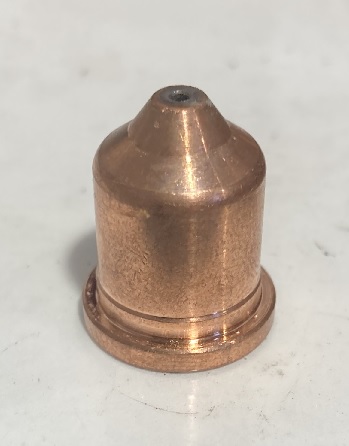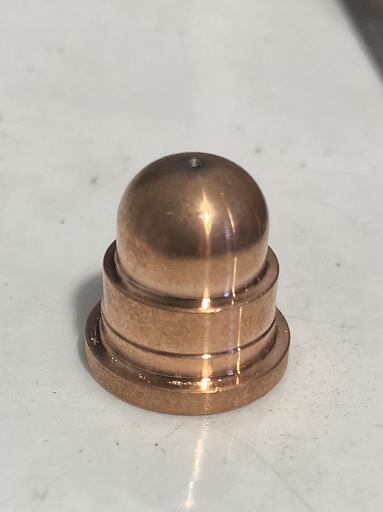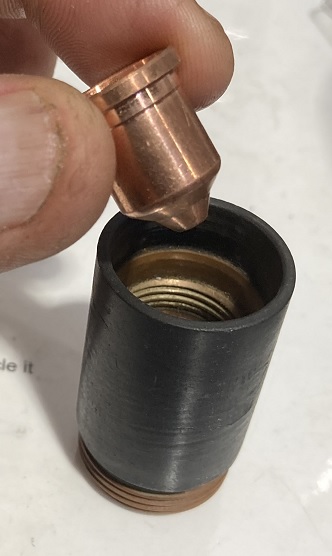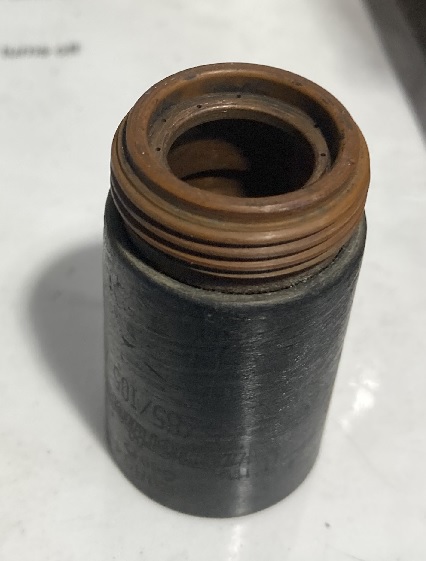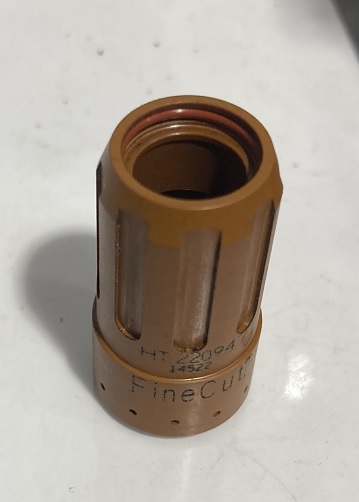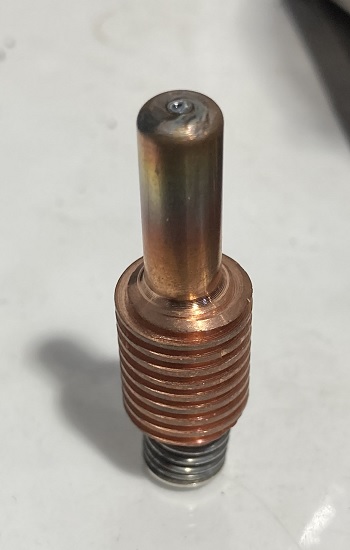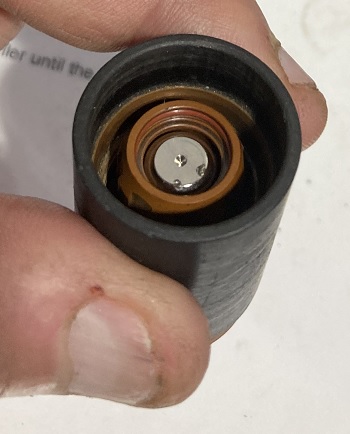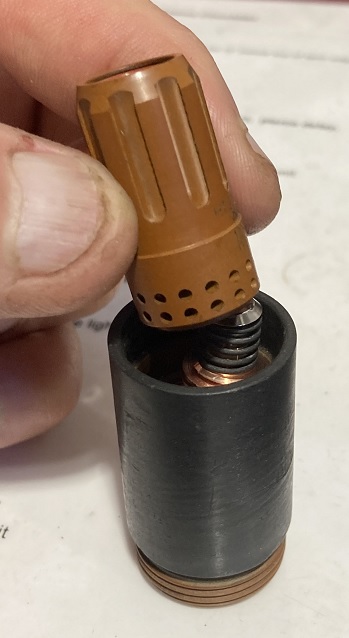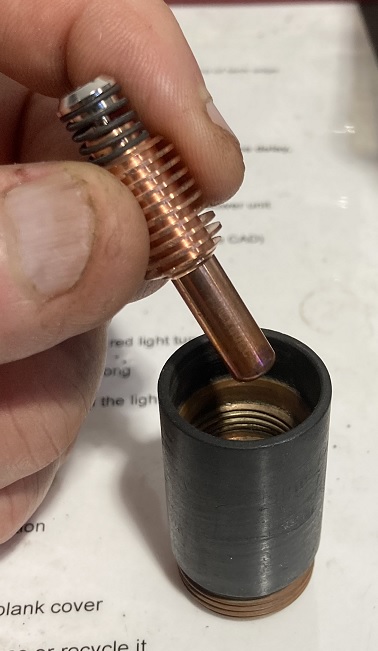Plasmatron Nozzle Assembly Instructions
Link to: Plasma Shop main page
Oveview
The Torchmate CNC plasma cutter (also known as the Plasmatron) uses a Hypertherm PowerMax85 plasma torch as its cutting tool. The torch is carried on the robot gantry in a vertical orientation. The cutting tip consists of an assembly of five parts. It must be assembled by the user and if it isn't done correctly, the machine will fail to cut or it will cut poorly.
Instructions for how to pick the nozzle and the correct speed and power settings are located here
The Torch Parts
Nozzles
The part that effects the cutting action is called the nozzle. They are made of copper. There are four alternatives: one small format (called "Fine-Cut) and three in a larger format. The thickness and material of the workpiece determines the choice of the nozzle, and machine settings are set accordingly.
The Fine Cut nozzles have hemispherical tips and they are shorter than the large-format nozzles. They can cut sheets between 0.024" (24-Ga) and 0.134" (10-Ga). These may be run at either 40 or 45-amp depending on the range of thickness.
The three large-format nozzles come in 45-Amp; 65-Amp; and 85-Amp sizes. They have conical tips and they are taller than the Fine-Cut nozzles.
Most often the 45-A nozzle is used. In carbon steel, it is appropriate for sheets 0.060" (16-Ga) up to 1/4-inch thick.
These components wear out after 1/2 to 1 hour of arc time. Inspect them for wear. If they show excessive burning or if the orifice is asymmetric, it should be replaced.
Retaining Cap
The nozzle retaining cap holds all of the pieces of the assembly in a single package to screw into the barrel of the torch.
Nozzles are inserted into the cap from the open end that doesn't have the copper male thread on the outside. The nozzles rest of a step inside the hollow space in the cap and stick out through the bottom (threaded end) of the cap.
Electrode and Swirl Ring
The remaining pieces in the nozzle assembly are the Electrode and Swirl Ring.
As you might guess, the Electrode is the source of the plasma arc that does the cutting. It has a plated tip that emits the arc, which faces down when in use. Electrical contact is made by a spring-loaded contact that faces upward into the barrel of the torch. Cooling fins are distinctive features in the middle of the electrode.
Please note: The electrodes should be inspected for wear and set aside if they show large or asymmetric burn marks. If you decide to melt them for copper scrap, you should pry off the spring and spring-loaded upper contact prior to melting.
The Swirl Ring directs the gas flow through the torch barrel past the electrode to the nozzle. This component applies a vortical motion to the airflow so that the torch tends to cut better on one side of the kerf. The pattern is referred to a as "climbing" cut. Solid shapes cut better if the torch moves around the contour CLOCKWISE and holes are cut better if the torch moves around COUNTER-CLOCKWISE.
